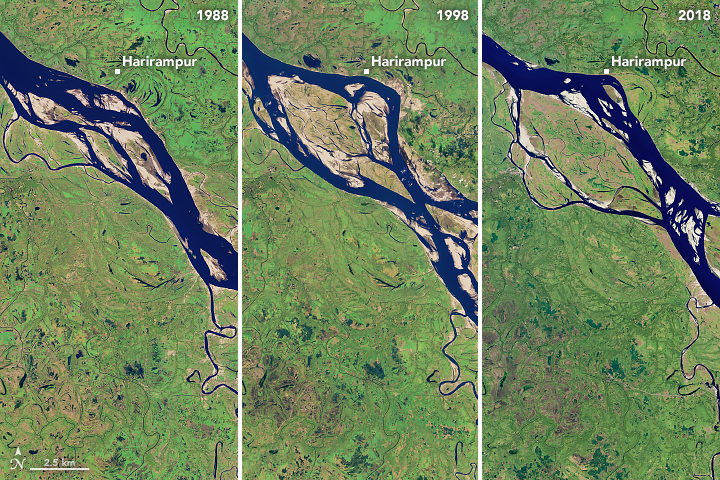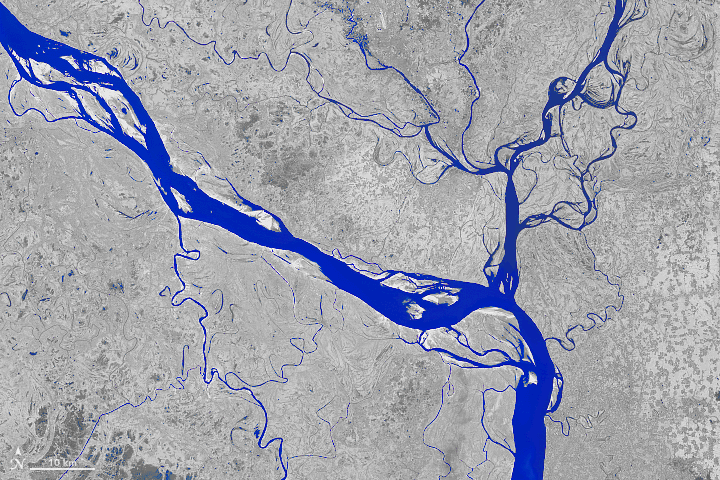


For decades, the Padma River has meandered, twisted, and weaved in different shapes through central Bangladesh. Each zigzag and turn tells a geologic story of the region, such as a large flooding event or the opening of a nearby dam. These events can lead to intense erosion along the banks of the river, displacing farms, homes, and even lives. Every year, hundreds (sometimes thousands) of hectares of land erode and fall into the Padma River. Since 1967, more than 66,000 hectares (256 square miles) have been lost—roughly the area of Chicago.
Satellite imagery shows how the river has been transforming in shape, size, and location from 1988 to 2018. The images above were acquired by the Thematic Mapper on Landsat 5 (1988) and the Operational Land Imager on Landsat 8 (2018). All images were acquired in January and February, during the dry season.
The animation below shows 14 false-color images of the Padma river between 1988 and 2018 taken by the Landsat 5 and 8 satellites. All of the images include a combination of shortwave infrared, near infrared, and visible light to highlight differences between land and water. (View all 14 images in natural-color by clicking here.)

The upper section of the Padma—the Harirampur region— has experienced the most erosion and shows the most notable changes. The river has become wider at this section by eroding along both banks, although most activity occurred on the left bank. Using topographic, aerial, and satellite imagery, scientists found that the left bank shifted 12 kilometers towards the north from 1860 to 2009 and developed a meandering bend. The river left a scar where the water once flowed, as you can see in the 2018 image.
In general, bank erosion is greatest on the outside of the river bends, where several processes can influence the land deterioration: changes in river flow, land masses moving downslope, and vegetation wearing away where the river meets the land. The middle sections of the Padma River tend to experience low rates of erosion.
Erosion rates vary over time with the magnitude of the flood flow and the type of bank material. In 1998, a large flood rose over these banks, exacerbated by the opening of the Farakka barrage (dam) in India. The Padma also has a large sand-bed, which is easily erodible. From 1998-1999, the erosion rate peaked at 3,120 hectares (12 square miles) per year.
In recent years, Padma’s erosion rates has decreased. It has slowed as the meandering bends disappeared due to sedimentation and chute cutoff—when the water flows across the land instead of following the curve of the river.
View more imagery and read more about the decadal changes of the Padma River by clicking here.
NASA Earth Observatory images by Joshua Stevens, using Landsat data from the U.S. Geological Survey. Story by Kasha Patel.